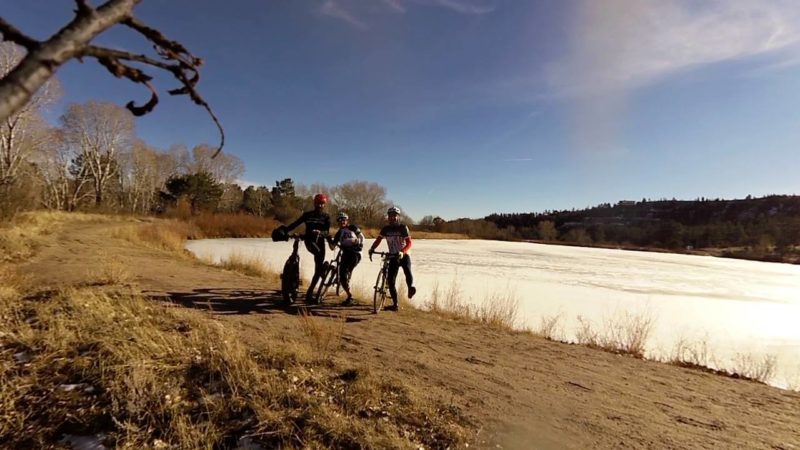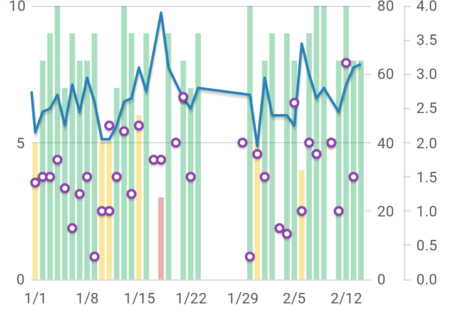It’s finally March, and technically spring is less than 3 weeks away. But with the weather we’ve been having, and especially the east coast getting hit, a lot of athletes training are stuck indoors with the snowy roads and ice. And I’ve seen a lot of negative posts on social media about being “forced” to train indoors, on the “dreadmill.” Sure, there is absolute beauty to being outside and probably a big part of why you are an endurance athlete. But if training indoors is really that bad, then why do it?

Attitude is everything.
Ask yourself, “what’s the purpose of this workout?” Is it a key workout, or do you just need to get in some activity? If it is a key workout, then I am of the opinion it should be approached with a positive outlook, as that workout is getting you closer to your goals. It might not be an easy workout, but isn’t there a saying that anything worth doing isn’t easy? Which brings up the point, have you set up your season goals? Workouts become a lot easier when you know what you are working towards!
Sometimes we do have to do things we don’t like, and granted, 3 hours on a treadmill probably isn’t appealing to 99.99% of the population, but from my perspective, being thankful you are capable to train will set any workout off on a good foot, and be prepared for it with the tips below.
How to make it better.
- Keep cool! Being indoors means no natural breeze for cooling. Use a fan (or fans) and keep the room as cool as possible, and have cold fluids available. When your core temperature rises too much, performance will suffer and you won’t have a shot at enjoying your indoor workout. So figure out works best for your indoor situation to help you stay cool.
- Be entertained. Have some really good playlists and save your best songs for the end or when you know you struggle the most. Catch up on TV shows and movies you’ve been meaning to watch.
- Focus on form. Use the time on a steady and stable surface to pay attention to your form. Are you bouncing, is your head level, shoulders relaxed. What’s your arm position? Are you heavy on the treadmill or quiet? What’s your stride rate? On the bike trainer, do single leg and cadence drills to tune up the pedaling efficiency.
- Change up pace, grade, cadence, etc. When outdoors, depending on where you live, you probably have some condition changes, and your pace and power zones are just that – zones with an upper and lower limit. So play within these ranges, mix things up a bit. Go for 3 minutes at one pace, 4 minutes at another, walk for 30s, and so on. A long base run doesn’t have to be 90 minutes at 10:00min/mile and 0.5% the whole time. The same goes for long rides on the trainer. Keep in your power but change up your cadence to mimic what you might see outside or on the race course you are training for. (If you have a computrainer or other similar device, loading in a course to follow does this for you.) Interval day is also a great day for being indoors.
- Practice fueling and hydration strategies. Being indoors can make it a little easier to eat and drink on specific schedules, and also a great time to try something new if you aren’t sure it will agree with you.
- Visualize. We sometimes end up in dark places during a race. How will you get yourself out of it? Practice your mantras, think about how you might feel on race day. I find be indoors allows me to be really in tune with how I am feeling at specific efforts.
- Split the workouts up. If you have a 2hr run on tap but can’t stand to be on the tready more than an hour, then do half the workout in the morning, and the other half in the afternoon.
- Get some friends to join you or join a group class. Set up your trainers or hit the gym together so you can enjoy each other’s company. Or find a group indoor training class you can join in.
- If all else fails, do something different. Get on a fat bike, go snowshoeing, or on a snow hike. Sometimes it’s fun to ditch the prescribed workout and just get out and be active for a little break from your traditional training structure.
The bottom line is that you have a choice. I’m guessing the events you are doing are because you want to do them, and that you enjoy the endurance lifestyle. Granted a big part of that is being able to explore the great outdoors, but if you have specific goals to accomplish, do what it takes to get it done so that you hit your race season knowing you put in the work. And be thankful that you have the ability to get it done!







